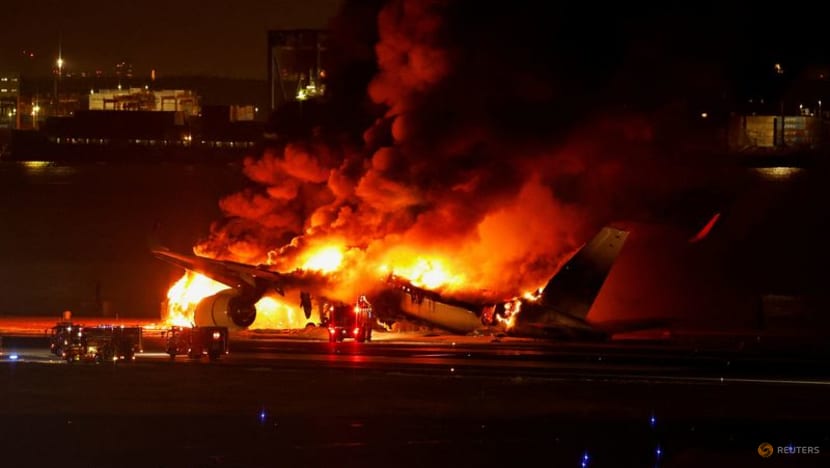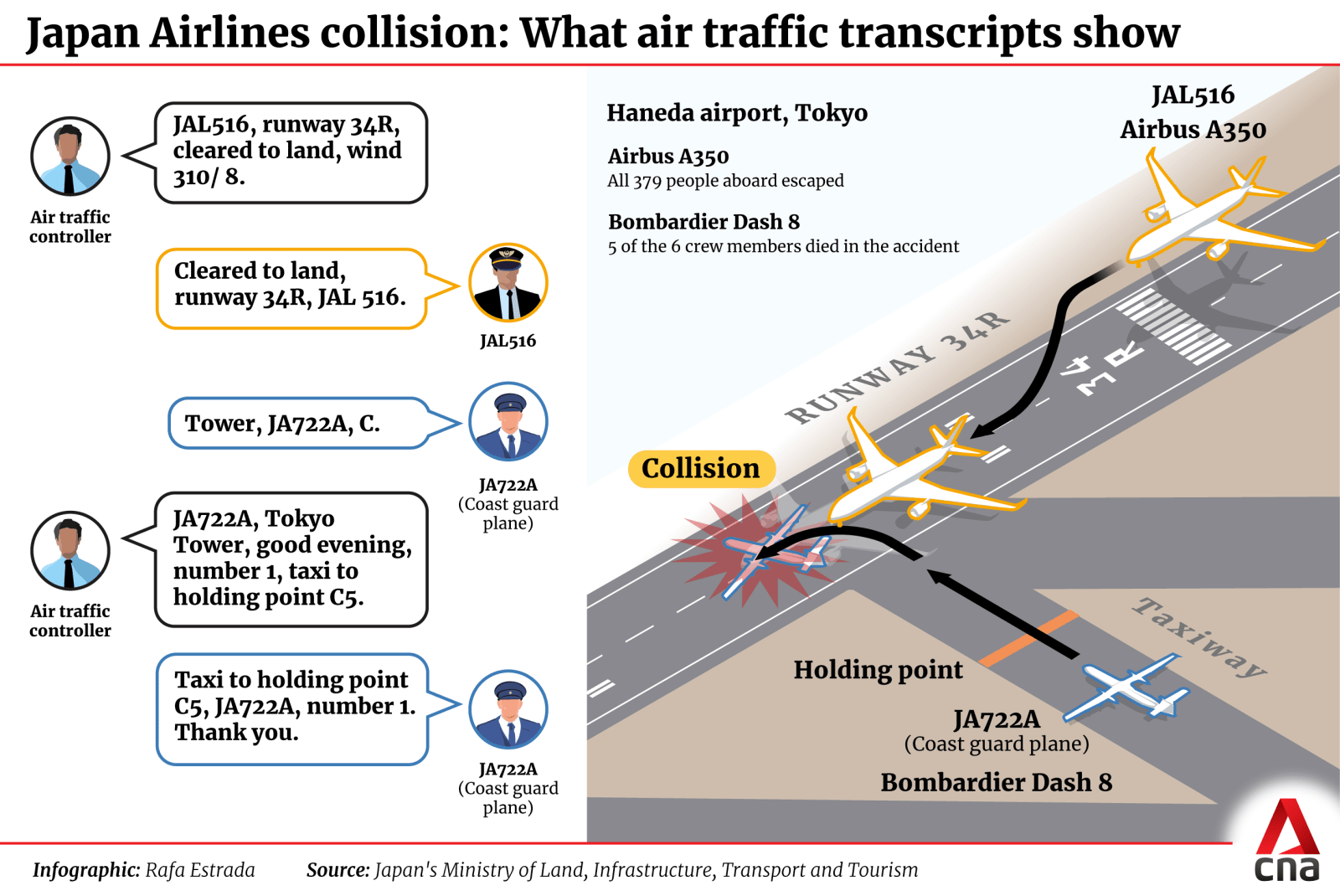Commentary: Japan Airlines ‘miracle escape’ is precisely why passengers should listen to safety briefings
Air travellers who take cabin safety briefings seriously are more likely to remain calm during an emergency. The key is getting the message across first, says CNA's Alison Jenner.

This audio is AI-generated.
SINGAPORE: In my recent trips to Hong Kong and Thailand, I noticed my fellow passengers were engrossed in reading, catching up on sleep or looking at their personal devices as we prepared for take-off.
Few seemed to pay attention to the cabin pre-flight safety demonstration. Even fewer still looked at the safety briefing card tucked in the seat pocket in front of them. In the wake of the Japan Airlines collision where all 379 passengers and crew survived a fiery runway crash, hopefully this will change.
Much attention has been centred on what has been widely hailed as a “miracle escape”. Reports suggested it might have taken the crew just 18 minutes from the moment of collision to safely account for everyone off the plane.
It's unclear how much time the actual evacuation was, but initial reports suggested it could have been completed as quickly as 90 seconds. The fire on the plane took more than six hours to extinguish.

That no one on the Japan Airlines flight died or was severely injured in the crash is remarkable. Aviation experts have praised the flight attendants and passengers for working together to execute a flawless evacuation.
“The passengers were able to escape because of the training, professionalism and performance of the cabin crew and flight crew, and because they followed cabin crew instructions directing them to the safe emergency exits,” Dr Hassan Shahidi, president and CEO of US-based nonprofit Flight Safety Foundation told CNA.
“The excellent discipline of the passengers in following evacuation orders was key to a fast exit from the plane,” added former senior Singapore Airlines executive Chow Kok Wah, who has more than 30 years of industry experience.
SURVIVING A PLANE CRASH
The Japan Airlines escape is a masterclass on plane crash survival. Even as the plane rolled down the runway with flames licking the windows, videos from inside the cabin showed most passengers remaining calm and seated.
They listened to instructions from the cabin crew and slid down the evacuation slides one by one onto the tarmac, leaving their hand luggage behind.
“I heard an explosion about 10 minutes after everyone and I got off the plane,” 28-year-old passenger Tsubasa Sawada told Reuters. “I can only say it was a miracle, we could have died if we were late.”
Another survivor told Sky News that the crew were “amazing” and that the passengers were “really disciplined”. “I took my son and we got down the slide … I turned around and saw the airplane with the nose completely smashed and the flames all over on the back,” said William Manzione.
The incident serves as an important reminder why passengers should pay full attention to cabin safety briefings, which contain vital information about emergency exits, life jackets, oxygen masks and other safety procedures.
While air travel is considered the safest mode of transportation, with five fatal accidents among 32.2 million flights globally in 2022, it is not risk-free.
Regrettably, research has shown that passengers tend to pay little attention to cabin safety briefings. In a study by the US National Transportation Safety Board in 2000, as many as 54 per cent of respondents said they did not watch the entire safety briefing as they had seen it before. Another 15 per cent said the briefing was common knowledge and therefore there was no need to watch at all.
It is not unheard of too for passengers to take sleeping medication and fall asleep before take-off, or pop noise-cancelling headphones back on after the crew finish their rounds asking passengers to take them off.
“It is human nature to ignore safety briefings because they are boring and familiar. But refreshing one's safety alertness is very important as it becomes muscle memory when applied minutes later if an emergency is activated. That is why the aviation authorities require safety briefings on every flight,” said Mr Chow.
Additionally, not all aircraft are configured the same way, so even frequent flyers should pay attention to the safety briefings so they know the location of the closest emergency exits, added Dr Shahidi.
HOW TO GET PASSENGERS TO PAY ATTENTION
Perhaps one way to get passengers to pay more attention to safety briefings is to make them more interesting.
Singapore Airlines’ in-flight safety video, which was produced in partnership with the Singapore Tourism Board and features famous spots across the island, is quite interesting to watch. As is Air Canada’s Disney-themed video and British Airways’, which features Sex Education actor Ncuti Gatwa, rapper Little Simz and tennis player Emma Raducanu.
In a nod to digital technology, Korean Air’s latest inflight video released on Jan 4 features virtual humans.
“We intend to change perceptions of inflight safety videos with these new ideas, and make them more relatable and engaging for passengers,” said a Korean Air representative.
Still, with the exception of videos, there has been little change in how safety information has been presented to passengers. How can airlines get creative to entice passengers to leave their devices for five minutes to pay attention to a safety briefing?
For crew members, training and testing are increasingly being done in cabin simulators to replicate the conditions they may encounter during an evacuation. Could a similar 3D simulation be created for passengers? How about an interactive app or touchscreen display to make safety instructions clearer and more fun?
Passengers who take cabin safety briefings seriously are more likely to remain calm during an emergency. The key is getting the message across first.
Alison Jenner is Supervising Editor at CNA Digital where she oversees commentaries.






